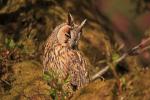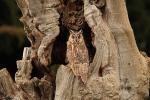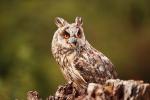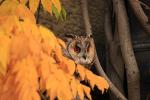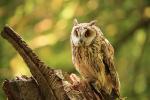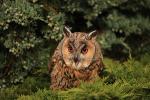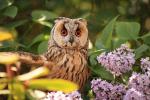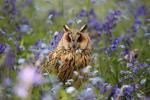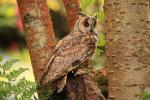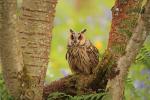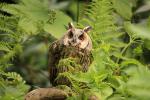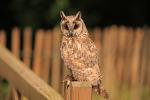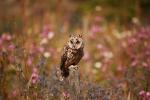The Long Eared Owl
A beautiful looking bird found mainly in dense vegetation and open woodland. They tend to be quite a solitary bird although during the winter months are known to roost in groups. The female species stands at around 37cm in length with a wingspan of 100cm, whereas the males are 34cm in height and have a wingspan of 96cm.
They have quite characteristic ear tufts which seem to sit on the top of their head. Their plumage is predominantly brown and buff with quite heavy mottling over most of their body. The males tend to be lighter in colour than the female birds and both birds have stunning golden/yellow eyes. Their legs and feet are heavily feathered and when the bird is relaxed on a fence post or in the branch of a tree, they appear to puff out their legs to make them look bigger than they are.
They will quite happily sit motionless on a tree branch all day resting, come night time they turn into ferocious hunters. They can fly and glide quite silently when hunting, preferring open clearings and fallow fields as opposed to the dense woodland where they tend to nest. When hunting they fly close to the ground at about 1 to 2 meters above the surface, as soon as the owl spots its prey it pounces immediately, trapping the prey in its large powerful talons. Small prey is usually swallowed whole, whereas larger prey is carried back to its nest site or roost in its talons.
The Long-eared owl is sometimes deemed to be the UK’s rarest native owl. Recent surveys estimate the population to be around 2,000 to 6,000 pairs.
In comparison to the Short-eared owl, the Long-eared owl is strictly nocturnal and is only likely to be seen during migration or when disturbed. Long-eared owls are widespread across the UK and make their habitats in coniferous woodland, dense hedgerows, and ancient deciduous woodland. They always choose quiet, isolated areas away from human settlements. Although quite widespread in the UK, there are fewer birds in Wales than in England or Scotland.
|


